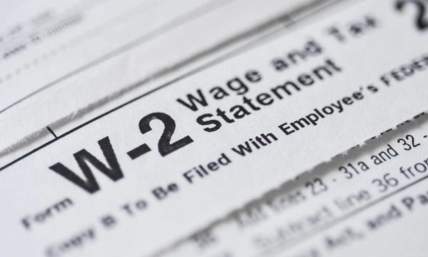If you’re thinking of joining the gig economy as a food delivery person, knowing where to look for information can be overwhelming. It’s a common misconception that working for food delivery companies is as simple as starting your car engine or hopping on your bicycle, and accepting a few orders. In actuality, working as a food delivery person requires you to consider a number of things, including buying or leasing, insurance, taxes, visas, and ways to maximize your earnings.
A few of the food delivery companies you can work for are UberEATS, DoorDash, Postmates, Grubhub, and Instacart. Whether you’re planning to work for one of the above companies or a different company, this guide will cover everything you need to know to get started!
The Gig Economy: A Quick Definition
The gig economy is a labor market chock-full of freelance workers and short-term contract workers. An article by the US Bureau of Labor Statistics highlighted a key difference between working in the gig economy and a traditional 9 to 5; in a traditional 9 to 5, your employer will take care of most expenses and logistics related to your job. Working in the gig economy, you have to be self-sufficient! No one else will kit you out with the right equipment, schedule your shifts, or pay taxes on your behalf.
Modes of Transport
Scoring: 5= Ideal, 4= Good, 3= Average, 2= Not Great, 1= Poor
| Mode of Transport | Operating Cost | Rate of Deliveries Per Hour | Environmentally Friendly | Reliable in All Weathers | Age or License Restricted | Total |
|---|---|---|---|---|---|---|
| Peddle Bicycle | 5 | 1 | 5 | 1 | 5 | 17/25 |
| Electric Bicycle | 4 | 3 | 4 | 1 | 5 | 17/25 |
| Scooter | 3 | 5 | 3 | 3 | 4 | 18/25 |
| Petrol Car | 1 | 5 | 1 | 5 | 3 | 15/25 |
| Electric or Hybrid Car | 3 | 5 | 4 | 5 | 3 | 20/25 |
-
Peddle Bicycle
Delivering food on a peddle bicycle has more upsides than just being a good cardio workout. The upfront cost of buying or leasing a peddle bicycle is less than an electric bicycle, scooter, or car. Down the line, cycling continues to save you money by cutting out the cost of gas and car maintenance. In addition, cycling is an eco-friendly mode of transport! A UCLA study found that choosing a peddle bike over a petrol car once a day lowers the average person’s transport-related carbon emissions by 67%, a figure that is exponentially higher if you make multiple delivery trips.
Another benefit of cycling is most companies have a lower age restriction for making deliveries via bicycle than driving or riding a scooter. UberEATS, for example, requires drivers and scooter riders to be at least 19 years old, while if you ride a bicycle you can start at 18 years old!
Unless you’re Lance Armstrong, however, riding a peddle bicycle is likely to limit the number of deliveries you can make per hour and, therefore, your earnings.
-
Electric Bicycle
Electric bicycles have similar benefits to peddle bicycles as you are able to avoid gas costs and high maintenance costs, and electric bicycles are environmentally friendly. However, electric bicycles are significantly faster than peddle bicycles. Electric bicycles go up to speeds of 20mph with relatively little energy expended, while the average speed of a peddle bicycle rider ranges from 12 mph to 15 mph.
Additionally, a study by Transportation Research Records shows that riding an electric bicycle helps many people overcome the barriers that may otherwise prevent them from hopping on a bike. Such barriers include “safety, weather, inconvenience, lack of fitness, lack of time, being tired, too much effort, and difficulties with trip chaining”.
The cost of buying an electric bicycle starts at around $1000, which is higher than a peddle bicycle but far more affordable than a car.
-
Scooter
Making food deliveries on a scooter is the perfect balance between keeping fuel costs low and having a high rate of deliveries per hour. Scooters are more fuel efficient than cars as they are lighter and are able to weave in and out of traffic instead of tapping the brakes repeatedly. According to the US Energy Information Administration, the average fuel price in 2023 is roughly $3.60 per gallon. Considering that the average tank size of a 50cc scooter is 1 to 3 gallons, you can likely fill your tank for under $11.00.
Scooters may not go as fast as cars, but in cities where cars are slowed down by traffic and, or speed limits, the difference is minor. This means your rate of deliveries per hour when riding a scooter is comparable to driving a car.
The downside, however, you’re exposed to the elements when riding a scooter and bad weather may prevent you from making deliveries.
-
Petrol Car
Forbes reports that 91.7% of US households had at least one vehicle in 2021, making cars the most prolific mode of transportation in the US. If you already have access to a car, you can use it to make deliveries.
Many people have access to a petrol car, but it may not be the ideal mode of transportation for food delivery riders. The fuel and maintenance costs of petrol cars are significantly higher than other modes of transportation. The US Bureau of Transportation Statistics reports that the average cost of operating a vehicle in 2022 (including fuel) is $0.28 per mile. If you factor in registration and maintenance for a new vehicle, the average cost is $0.72, assuming you drive it 15,000 miles per year.
-
Electric or Hybrid Car
Electric cars and hybrid cars are growing in popularity. An electric car is defined as a car that relies on electric charging, while a hybrid car combines an electric motor and a gasoline engine. The US Environmental Protection Agency claims that petrol or diesel vehicles used to account for over 99%of car and passenger truck sales but that this is no longer the case.
Electric cars tend to have a higher upfront cost than petrol cars but can save you money over time. According to the Natural Resources Defense Council, “EV drivers tend to spend about 60 percent less each year on fuel costs compared to drivers of gas-powered cars.”
In addition, there are environmental benefits to opting for an electric or hybrid car over a petrol car. Greenpeace estimates that in Europe, an electric car has half the climate impact in its lifetime than the average petrol car.
Many food delivery companies are encouraging the use of electric cars because of their environmental benefits. For example, Uber has partnered with EvGo, a company that operates 850 electric car charging stations in the US. Uber drivers with Pro-Gold, Platinum, and Diamond status save up to 45% at EvGo charging stations.
Buying or Leasing
| Mode of transport | Considerations When Buying | Considerations When Leasing |
|---|---|---|
| Peddle Bicycle |
|
|
| Electric Bicycle |
|
|
| Scooter |
|
|
| Petrol Car |
|
|
| Electric or Hybrid Car |
|
|
-
Peddle Bicycle
If budget is your foremost concern, a peddle bike is the cheapest mode of transportation covered in this guide. You can buy new, or if you do some digging, there are plenty of good quality, second-hand bicycles. Sometimes all that’s needed is a good polish and some oil on the chain, and your second-hand bicycle is good to go.
It is generally better to buy a good quality, second-hand bicycle than lease a new bicycle so you don’t have to make repeated payments.
-
Electric Bicycle
Electric bicycles are generally more expensive than peddle bicycles. If the cost of an electric bicycle is a concern for you, there are many options to lease. Leasing is a long-term agreement to borrow an asset, and in some cases, to eventually own it.
Zoomo and Jot Bikes are two electric bicycle leasing companies that have partnerships with UberEATS, DoorDash, GrubHub, and or Instacart. If you’re a rider for one of these food delivery companies, you might be eligible for discounts when leasing a bicycle from Zoomo or Jot Bikes. Both companies have standard rental options and lease-to-own. Zoomo’s prices start at $49 a week for a standard rental, and $279 a month (plus a $200 down payment) over a 12-month period if you plan to lease-to-own.
Postmates is a unique company as they have their own electric bicycle rental program. You might be eligible for Postmate’s rental program if you live in San Francisco, CA., Portland, OR., or Seattle, WA, and it only costs $80 a month.
-
Scooter
Scooters are adored around the world but are less popular in the USA. Scooters' relative lack of popularity means it may be more difficult to find leasing companies.
However, you can definitely buy a scooter in the US. According to several rider reviews, opt for a Japanese make for affordability, or a European make, such as Vespa, for reliability and a classic look.
-
Petrol Car
Petrol cars are the most popular mode of transport in the US. As aforementioned, 91.7% of US households had at least one vehicle in 2021. If you have access to a household car, you can get started on your gig-worker journey with relatively low initial costs.
Hertz and Avis are rental car companies that have partnerships with UberEATS, DoorDash, Grubhub, and other food delivery companies. Long–term rentals from Hertz or Avis are more suitable for full-time drivers rather than part-time riders because you must ensure that your profit outweighs your rental costs.
There are many other options to buy or lease petrol cars in the US. Search the options in your local area, including second-hand dealerships and local leasing companies.
-
Electric or Hybrid Car
According to the US Bureau of Labour Statistics, electric cars are the future. President Biden has publicly committed himself to increasing the use of electric cars in the US during his time in office. Biden’s Inflation Reduction Act, for example, makes electric cars more affordable by adding and expanding tax credits for buying electric cars.
If you are planning to buy an electric or hybrid car to use for food deliveries, take advantage of the Inflation Reduction Act and similar programs.
In an effort to promote green energy, UberEATS, DoorDash, Grubhub, and other food delivery companies have partnerships with electric car leasing and, or renting companies. Each food delivery company details its partnerships on its websites.
Insurance
Many states have legislation mandating that food delivery companies provide insurance to their delivery people. Just this year, Oregon implemented Bill HB 2393, so transportation network companies are now required to offer personal injury protection.
However, in many states, insurance legislation isn’t as thorough as Oregon’s Bill HB 2393, nor does legislation cover personal injury protection. Make sure to check insurance legislation in your state and the insurance policy of the food delivery company you choose to work for.
In order to cut costs, many food delivery companies have insurance coverage loopholes so they can avoid making a big payout. According to this Forbes article, possible loopholes you should be aware of include:
-
‘Excess’ policies
‘Excess’ insurance policies mean that as a delivery person, insurance provided by the food delivery company you work for will only kick in after you’ve exceeded the limit of your personal insurance plan. Doordash and Postmates both provide ‘excess’ insurance policies to their delivery people.
-
‘Active delivery’ policies
‘Active delivery’ policies mean your company’s insurance will only cover you are actively making a delivery, in other words, the takeout food is in your car, and you are driving to the dropoff location. Most ‘most active delivery’ policies don't cover you when you are driving to the restaurant to pick up an order. Doordash and Amazon Flex both have ‘active delivery’ or similar insurance policies.
-
Commercial liability insurance vs injury insurance vs auto insurance
There are different types of insurance. Most food delivery companies have commercial liability insurance but may exclude personal injury insurance and, or auto insurance.
Having a personal health insurance plan should be a top priority for food delivery people. UberEATS, DoorDash, Postmates, Grubhub, Instacart, Amazon Flex, and several other food delivery companies are partnered with Stride Health. Stride Health is a great tool to sift through insurance plans offered by various companies and finds deals, discounts, and detailed coverage for you. Alternatively, if you’re a rider for Shipt, the company has partnered with River Health and offers health insurance for $35 a month.
Taxes
As a gig worker, you are classified as an independent contractor in the eyes of the tax man. This means it’s your responsibility and not your employer’s to file your tax returns. In most cases, if your net earnings from self-employment, a.k.a. gig work, are at least $400, then you must file an income tax return.
-
Form 1040
Independent contractors should use Form 1040 to file tax returns. When completing Form 1040, be sure to attach schedule Schedule C to report your earnings and Schedule SE to calculate self-employment tax.
-
Write-offs
The silver lining of filing your taxes is write-offs. A write-off is a business expense deducted from your taxable income. For delivery riders, there are plenty of business expenses that can be counted as write-offs. Your bicycle and biking equipment, car maintenance and fuel or electric charging fees, a portion of your smartphone and phone plan, and commission and or fees paid to the food delivery company are all potential write-offs.
How Many Hours Can You Work?
If you’re making decent money as a food delivery rider, it can be tempting to cram in as many hours as possible. However, is there a limit to the number of hours you can work as a food delivery rider?
-
Foreign Students
There are three types of visas for foreign students in the USA: the F-1 Student Visa, the M-1 Student Visa, and the J-1 Exchange Visa.
The F-1 Student Visa is for full-time academic students. In your first year of study, you can only work on campus. In the following years of study, you are allowed to work off campus with the stipulation that your work is related to your area of study - this means food delivery work is out of the picture. Exceptions can be made in the case of economic hardship, if applicable to you, speak to your designated school official.
The M-1 Student Visa is for vocational study. If you’re on an M-1 Student Visa, the rules are similar to the F-1 Student Visa, and you likely cannot work as a food delivery rider.
The J-1 Exchange Visa is for people on a school or work exchange. In most cases, work is part of your program. You cannot work on the side as a food delivery person.
-
Tourists
Recreational tourists are not permitted to work in the US, including gig economy work.
-
People on work visas, residents, and citizens
If you have no visa restrictions on your workable hours, either you’re on a work visa, a resident visa, or you’re a citizen, could you hypothetically work 24/7? The short answer is no. Some food delivery companies have restrictions on the number of hours you can work per week. Instacart, for example, limits workers to 29 hours per week. Other companies have restrictions on the number of hours you can work consecutively. When working for UberEATS, the app will alert you after 12 hours that you need to take a minimum 6-hour break.
Best Cities to Work In
This table details the 20 best cities in the US to work in as a food delivery person. Variables that are important when weighing up which is the best city to work in include road safety, weather, flatness, availability of food delivery companies, and traffic.
Scoring: 5= Ideal, 4= Good, 3= Average, 2= Not Great, 1= Poor
| City | Road Safety | Weather | Flatness | Availability of food delivery services | Traffic | Total |
|---|---|---|---|---|---|---|
| San Francisco, CA | 4 | 5 | 1 | 5 | 1 | 16/25 |
| Seattle, WA | 4 | 4 | 2 | 5 | 3 | 18/25 |
| Chicago, IL | 4 | 3 | 5 | 4 | 1 | 18/25 |
| Eugene, OR | 5 | 3 | 4 | 3 | 3 | 18/25 |
| Fort Collins, CO | 5 | 3 | 5 | 3 | 4 | 20/25 |
| Arlington, VA | 5 | 4 | 4 | 3 | 4 | 20/25 |
| Ann Arbor, MI | 5 | 2 | 3 | 3 | 4 | 17/25 |
| Madison, WI | 5 | 1 | 2 | 3 | 2 | 13/25 |
| Miami, FL | 2 | 5 | 5 | 4 | 2 | 18/25 |
| New York, NY | 4 | 3 | 4 | 5 | 1 | 17/25 |
| Honolulu, HI | 5 | 5 | 2 | 4 | 2 | 18/25 |
| Dallas, TX | 2 | 4 | 5 | 5 | 3 | 19/25 |
| Pittsburgh, PA | 3 | 3 | 1 | 4 | 2 | 13/25 |
| Philadelphia, PA | 3 | 4 | 5 | 4 | 1 | 17/25 |
| Atlanta, GA | 2 | 3 | 2 | 4 | 1 | 12/25 |
| Houston, TX | 2 | 4 | 5 | 4 | 2 | 17/25 |
| Salt Lake, UT | 3 | 5 | 5 | 4 | 3 | 20/25 |
| Las Vegas, NV | 3 | 5 | 5 | 4 | 3 | 20/25 |
| Tampa, FL | 2 | 5 | 5 | 4 | 1 | 17/25 |
| Boston, MA | 5 | 2 | 4 | 3 | 2 | 16/25 |
Cities that score high on road safety tend to have good bicycle lanes for cyclists and a low rate of accidents for cyclists and drivers. Weather is another important consideration, as bad weather can prevent you from making deliveries–especially if you are on a bicycle or scooter. Flat cities rather than hilly cities are better for cyclists as you can move around much faster. The availability of food delivery services must be considered as some companies, such as Caviar, only operate in certain states. Finally, the less traffic, the better, as this allows you to make your deliveries at a faster rate.
Which Company You Should Work For
When deciding which company to work for, particularly for food delivery riders, the best company depends on what your priorities are. Food delivery companies differ in terms of income, flexibility, benefits, extra expenses, and overall experience. If you want more information about individual companies, check out the 2023 Guide to Choosing the Best Food Delivery Employer.
Peak Hours
As you’d expect, peak hours for food delivery riders fall around mealtimes. Peak hours are generally between 6 am and 9 am (you’d be surprised at how many people order breakfast), 11 am and 1 pm, and 5 pm and 9 pm.
It’s important to keep track of peak hours because many companies offer promotions to delivery riders that are on the clock during these periods. For example, UberEATS offers two promotions to riders which are Boost and Surge. When demand is high, Boost and Surge promotions kick in, meaning that riders are paid more. Similarly, Postmates offers Blitz and Crushers bonuses.
How Much Can You Make?
There are a lot of variables affecting your income when working as a food delivery rider. A typical payment structure is base pay + supplements + promotions + tips: base pay is the guaranteed amount per ride; supplements are additional pay for time spent waiting or long-distance rides; promotions are generally peak-hour bonuses; and tips are paid by the customer for your service. Not all food delivery companies offer supplements or promotions, so beware that the payment structure can differ. Per hour, you can expect to earn between $17 to $25. Before spending your money, make sure to put some aside to cover expenses.
Tips to Increase Your Earnings
When it comes to working in the gig economy, the effort you put into it is what you get out of it. Going the extra mile in terms of customer service or self-organization can have a big impact on your earnings. Some tips you can implement are:
1) If possible, plan your delivery hours around promotions.
2) Some apps recommend you schedule shifts. Set a phone alarm to schedule your shifts as soon as possible to secure prime locations and hours.
3) Greet customers with a smile, as tips make up a big percentage of your earnings.
4) If an order is running late or an item is missing, communicate with customers about the issue. It’s better to be transparent so the customer understands you’re doing your best to solve an issue.
5) Pick up multiple orders from one location so you can maximize your deliveries per hour.
6) Sign up as a rider on multiple apps, so that when business is slow on one, you’re not left twiddling your thumbs.
Final Thoughts
At the end of the day, working in the gig economy requires you to be a little more self-organized than working a traditional 9 to 5. However, many gig economy veterans will tell you the positives, such as a flexible schedule and not having to answer to a boss, make the gig economy worthwhile. If you want to try out the food delivery riding for yourself, you can use this guide to help you navigate the process and set yourself up for success.











